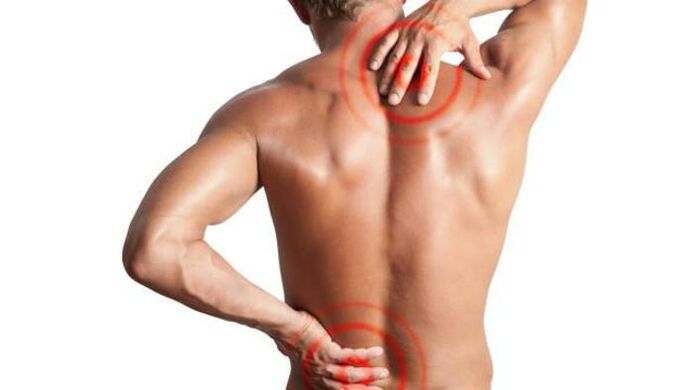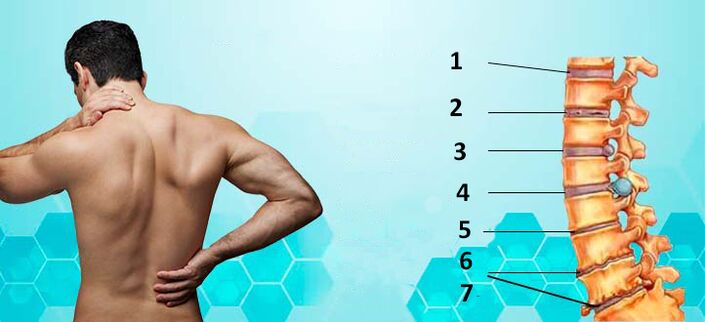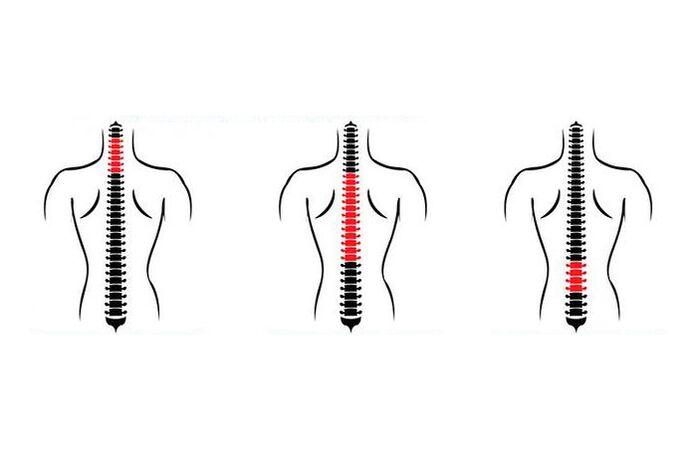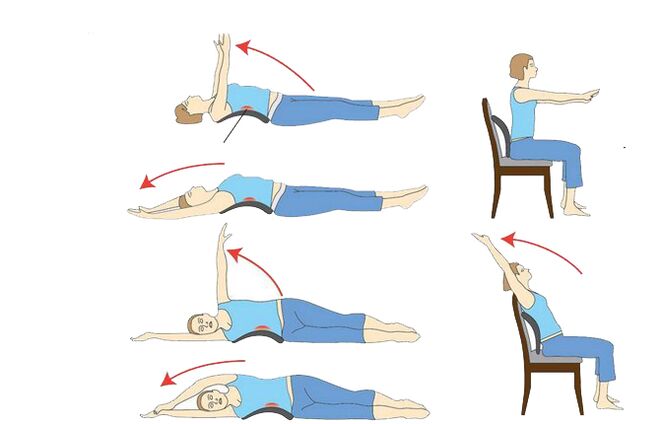Most cases of uncomfortable pain in the lumbar region and spine are associated with a condition such as osteochondrosis. It affects around 40% of men and women between the ages of 30 and 40 and around 90% of the elderly. The earlier the disease is diagnosed, the more thoroughly the patient is examined, the greater the likelihood of stopping the progression of osteochondrosis and maintaining activity in old age.

Definition of the disease, the cause of the disease
So what is osteochondrosis, where does it develop, what structures does it affect, what is the method of treatment? The disease affects the spine and the tissues between the vertebrae and manifests itself in a violation of their shape, density, elasticity, and sometimes even integrity. As a result, the distance between the vertebrae decreases, the spine gradually loses stability, pinching of the nerves, hernia formation can develop, which is accompanied by back pain and discomfort when moving.
If we briefly describe the essence of osteochondrosis, it is a gradual wear and tear of the tissues of the intervertebral discs (cartilage), which leads to instability of the spine. If left untreated, ligaments and joints break down, osteophytes appear, posture is disturbed, movements are accompanied by pain.
Causes of osteochondrosis of the spine:
- an inactive lifestyle with a deficit in muscle stress;
- Spinal injury;
- systematic heavy load on the spine;
- Inheritance;
- Obesity;
- Hypothermia;
- hormonal and autoimmune diseases;
- toxic poisoning;
- congenital connective tissue failure;
- psychosomatic reasons (stress, depression, etc. ).

Symptoms of osteochondrosis
The disease is characterized by phases of remission and exacerbation with varying degrees of severity of symptoms. The main symptoms of spinal osteochondrosis, characteristic of the main types of the disease, lumbar, cervical and thoracic spine:
- pain localized in a specific area of the spine;
- Reflected-type pain syndrome associated with damage to nearby musculoskeletal tissue;
- Myelopathy and radiculopathy due to compression of the nerve endings of the spinal cord and blood vessels.
Depending on which part of the spine is affected by the disease, the list of symptoms of osteochondrosis can vary. Namely: Patients notice tingling in the muscles, numbness in the limbs, other sensory disorders, loss of strength in arms and legs, headache and heartache, painful lower back pain.
The pathogenesis of osteochondrosis
Before the elastic fiber core of the intervertebral disc loses its elasticity and deforms, a number of osteochondrosis processes take place in the human body:
- Convulsions, dystonia, inflammation;
- decreased blood flow;
- Damage to the processes of nerve cells.
In addition, cracks appear on the deformed ring, a protrusion of the intervertebral discs develops, and a break occurs. Typically, these factors indicating a spinal disease develop in childhood or adolescence and are often the result of poor posture, scoliosis, sports injuries, infectious diseases or congenital vascular diseases.

Stages of osteochondrosis
There are three stages in the development of spinal osteochondrosis:
- the first, at which the intervertebral disc begins to lose height, takes on a flattened shape, loses moisture and elasticity, can protrude;
- the second develops without treatment and is manifested by a violation of the structure of the fibrous ring of the intervertebral disc, the appearance of cracks and the development of instability in a certain area of the spine;
- characterized by ruptures of the intervertebral cartilage, the development of a hernia, the formation of bone processes of osteophytes.
Symptoms of the development of osteochondrosis of the spine become more intense from the first to the third stage.

Classification of osteochondrosis
The classification of osteochondrosis is based on several signs, the most important of which is the zone of localization. Differentiate:
- lumbar osteochondrosis;
- osteochondrosis of the cervical spine;
- Osteochondrosis of the thoracic spine.
Osteochondrosis in the lumbar spine is manifested by pain in the lumbar area, which increases with turning the body and lifting weights. The pain can be transmitted to the leg or both legs, referred to as pain. With a sharp syndrome, a hernia is suspected. With lumbar osteochondrosis, leg muscle cramps and peeling of the skin are common.
With the development of osteochondrosis of the spine in the cervical spine, vertebrae 1-7 are affected. The disease is accompanied by a headache in the back of the head, pain in the neck, collarbone, shoulders. When turning the head, grinding is possible, numbness of the upper limbs, a feeling of lump in the throat.
With osteochondrosis of the spine in the chest area, the patient worries about pain in the chest, shoulders, armpits, heart. Perhaps a feeling of shortness of breath, the development of attacks of intercostal neuralgia.
Osteochondrosis in the lumbar spine is most common, and least common in the thoracic spine.
Complications of osteochondrosis
If the patient thought about the treatment of osteochondrosis too late, when the symptoms of the disease are pronounced, the following complications may arise:
- Intervertebral hernia;
- Stroke of the spinal cord;
- Kyphosis of the spine;
- Head Start;
- Radiculitis;
- Paralysis of the lower extremities.
Without treatment, the patient begins to suffer from regular exacerbations of the condition, which are characterized by increased pain, restricted mobility, and a sharp deterioration in general well-being. The worst complication of spinal osteochondrosis is disability. Therefore, in order to prevent such serious changes in the work of the musculoskeletal system, it is necessary to have high-quality and timely treatment for osteochondrosis.

Diagnosis of osteochondrosis
A disease like osteochondrosis is primarily pain in the spine. However, it is important to distinguish it from pain caused by problems other than disc degeneration. To do this, doctors conduct a step-by-step diagnosis that includes:
- Take anamnesiswhich involves a conversation between a specialist and a patient to identify the exact area of pain localization, factors that provoke the worsening of the condition. It is important to know the patient's profession, the period when the problems with the spine began, when an exacerbation occurred, what type of pain there is in the lumbar spine and other regions, what methods of treatment the patient has used.
- Physiological examinationallows you to determine the proportions of the body, the quality of the movements and actions performed, the condition of the skin and the degree of sensitivity to pain. The doctor, by palpation, determines the condition of the muscle tissue, the presence of seals, edema, etc.
- X-ray of the spine in two planesfor visual condition assessment. Allows you to determine the displacement of the vertebrae, the presence of osteophytes and salt deposition.
If the data collected is insufficient to prescribe treatment or there is a suspicion of serious pathology of the spine, the patient is prescribed CT and magnetic resonance imaging, thanks to which it is possible to examine in detail the vertebrae, vessels and soft tissues, tissues, nerve processes and create a complete oneImage of the condition of the spine affected by osteochondrosis to determine tactical treatment.

Treatment of osteochondrosis
As with any disease, osteochondrosis requires identification of the cause that triggered its development. Reducing the severity of symptoms is not the most important, but it is an important phase of treatment, the outcome of which will depend on a number of factors. In some cases it is a complete cure, in others it is the prevention of complications and disabilities.
In the treatment of osteochondrosis of the spine, a group of measures are used:
- Changing the patient's daily schedule;
- Prescribing medication to relieve symptoms;
- physiotherapeutic procedures (massage, acupuncture, electrophoresis, exercise therapy, etc. ).
The change in the daily regimen in the treatment of osteochondrosis of the spine includes a decrease in the intensity of physical activity, bed rest with severe pain, the exclusion of sharp curves and bends.
Drugs used to treat osteochondrosis of the spine
They can be divided into several groups:
- Muscle relaxants for pain relief, including tablets, injection anesthetics, and anti-inflammatory injections for osteochondrosis. The homeopathic preparation normalizes the function of the thyroid gland, improves lymphatic drainage, has anti-inflammatory, detoxifying and immunomodulatory effects.
- Non-steroidal anti-inflammatory drugs. When used in patients with osteoarthritis, it reduces the progression of inflammatory and destructive changes in the joints, improves the integrity, thickness and other properties of cartilage, and stimulates bone tissue repair.
- anti-inflammatory topical ointments and alternative transdermal patches. Such drugs have analgesic, antirheumatic, antipyretic, and anti-inflammatory effects. The mechanism of action is to reduce the production of inflammatory mediators, lower body temperature and pain.
- Chondroprotectors;
- Remedies for therapeutic analgesic blocks;
- B vitamins.
Additional treatments
Of the additional means that can be used to treat, relieve the general condition and improve the functioning of the spine and intervertebral discs, the most effective are listed:
- Acupuncture;
- Magnetic therapy;
- professional massage and self-massage;
- Physical education courses;
- manual therapy.

Prognosis, prevention
If the disease of the spine is not neglected, proceeds without serious complications, then in 1, 5-2 months of competent treatment, the condition can be significantly improved and the transition of the disease to a chronic form can be prevented. In difficult cases, doctors recommend surgical treatment.
Spinal osteochondrosis prevention includes:
- adhering to the correct daily schedule with a change in body position and moderate physical activity;
- regular visits to the swimming pool;
- Control of body weight;
- wear comfortable shoes;
- balanced nutrition;
- Sleeping on an orthopedic pillow and mattress;
- Taking missing nutrients or preventive homeopathic medicines to boost immunity, improve overall health, and get rid of dystonia.
It is necessary to undergo annual medical examinations and immediately after the appearance of pain in the spine, see a doctor for treatment.
No matter what type of osteochondrosis we are talking about - lumbar, cervical or thoracic spine - paying attention to one's health should become a habit, especially when it comes to the basis of the entire musculoskeletal system - the spine.





































